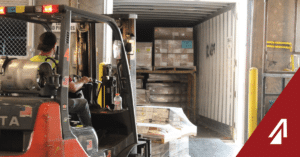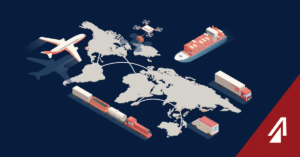Tracking Options for Every Situation
In today’s current environment, international shipping has become as common as moving freight domestically. Global reach and faster service requirements have increased the need for innovative tracking systems that provide in-depth supply chain visibility. The systems in place for tracking freight have widened with opportunities, enabling companies to choose a tracking method that best fits their operations.
While there are new methods arising from tracking technology, we are going to evaluate three common practices that can increase visibility through the supply chain.
Location Scanning
Location scanning gives you the ability to track freight between locations with the knowledge of arrival and delay times. The location scanning process is effective for companies that use transportation methods with multiple touch points or operations that utilize milk run pickups. Having the ability to track the movement from each facility can help pinpoint the time that damages or delays occur. Over time with data collection, routes can be broken down by location and evaluated for patterns between stops. Location scanning alone may not be best for time-critical loads but it can offer increased levels of visibility before arrival.
Driver Tracking
With the recent implementation of the Electronic Logging Device Mandate (ELD), logistics providers are requiring carriers in their networks to operate with tracking apps or devices. While the devices main purpose is to keep a log of working hours, the devices can also be multi-functional with GPS location tracking. Inclement weather can play a large role in unforeseen delays and can go unidentified until arrival at the next scanning point. However, having the ability to track movement between each location enables managers to identify a problem as it happens with real-time updates. Driver tracking in the past has been focused around calling drivers for verbal confirmation on their current location, now with smartphone technology and newer GPS devices, calling for an update is no longer necessary for in-transit details.
Transportation Management System (TMS)
Location scanning and driver tracking are important to keep a visual on shipments but visibility shouldn’t be limited to current freight. Integrating technology into current tracking capabilities creates a complete transportation management system that can archive past shipments and enable companies to identify reoccurring issues and shortfalls. The ability to strategically look at services over a period of time adds another layer of visibility for inventory forecasting and helps predict future transit times. A TMS that integrates all of the visibility tools and reports the data back in an efficient manner can save time that is typically allocated to physically tracking down freight and confirming deliveries.
Determining which tracking process is right for your operation may not be as clear as picking one method and running full force. The best fit could be a mix of tracking systems that coincide to report real-time data and analyze past trends. Not every shipment is the same and your process can reflect the needs you will have. If expert advice is needed to determine which process is best for your operation, a logistics provider can help analyze all available options and also provide a top of the line transportation management system.


